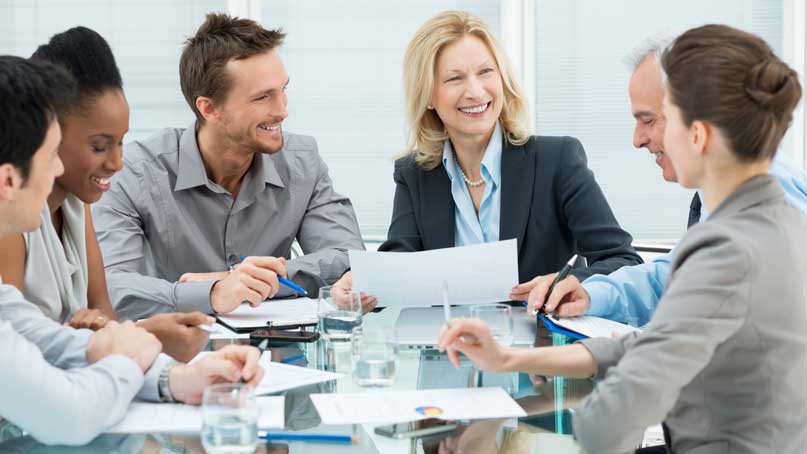This job seeker was promised a job lead from a friend – an introduction to a hiring manager at her dream company — but to date, her friend has not delivered:
What do you do when a friend says they will introduce you to someone you want to meet, but then they don’t? How long do you wait before asking them again? Should I just drop it? Should I ask someone else for the introduction? — Jennifer
Props to this job seeker for networking to drum up leads for her job search. Tapping the people you know for ideas, information and introductions is the most direct route to job search success because you retain control of your search. You relay your story directly, instead of submitting a resume and hoping someone reads it. You ask for what you need, which isn’t always an interview right away, allowing you to conduct your research, learn more about your interests and prepare before meeting decision-makers. You are an active participant in making opportunities happen, instead of waiting for recruiters and employers to call.
However, your active role isn’t over once you hear a promise from a friend to help your job search. It is still up to you to help your friend follow through. People are busy, and no one will take better care of your job search than you will. Here are four steps to take to ensure that a friend follows through on an offer to help your job search:
Always follow up on your networking promises
You should always follow up on your networking. If someone invites you to send a resume, send your resume. If someone gives you a piece of advice, send them a results update when you implement what they suggested. (If you decide not to follow their tip, simply tell them what you did instead or what generally happened with whatever problem they were kind enough to try and help and you solve.)
Similarly, if someone promises you an introduction, ask for a timeline for when to expect it, and then follow up after that deadline if you don’t hear from them. Make sure that you’re not at all accusatory in your tone. Assume a positive scenario – your friend absolutely, positively meant to help you – and in that frame of mind, ask your friend what happened. It can be as simple as, “When we connected last week, you mentioned you were going to talk to Jane Doe at Company Dreamboat about me. How did that go?” (This particular follow-up is framed as if you’re 100% sure your friend did it. You believe in your friend!)
Mix up your approach
It’s great if you can ask your friend directly what happened and gauge their reaction. If they promised something they actually can’t or really don’t want to deliver, you may be able to tell by their reaction to your follow up question. Furthermore, this second encounter gives your friend another chance to back down on their promise. If you sense they may have promised you something they actually can’t deliver, you can even give them a graceful exit, “When we connected last week, you mentioned you could talk to Jane Powerful at Company Dreamboat about me. Are you sure that’s okay? Can you still do that?” Don’t just repeat your request verbatim – tailor your approach based on the current situation.
If you don’t reach your friend directly – e.g., you send an email to follow up instead of seeing them or calling – then you’ll need to wait several days for that response. If you don’t get a second response, mix up your approach. Try a phone call, text, social media outreach or see if you can get together. You want to try again but variety helps — your emails may not be getting through or your friend may be snowed under a busy inbox — so you want to mix up your approach before giving up altogether.
Offer alternative solutions
In your various approaches, whether email, voicemail message, text, etc., offer alternative solutions for how your friend can help. This is another way to give your friend a graceful exit, and one of your suggestions may actually be easier on your friend. For example, if you have another way to get to Jane Powerful, then let your friend know in your follow-up message, “Checking in on the introduction to Jane Powerful. I actually found another person who knows her. If you haven’t already reached out to Jane, I’ll move forward with that other introduction.” Give your friend a couple of days to respond, then move on.
In general, you never want to rely on only one way into a company, no matter how close your friend is or how much you assume they will help you. When a friend offers to give you an introduction to someone, ask them if you can reach out to the person directly and use your friend’s name. This puts the immediate follow-up action back on you. If your friend insists they want to make the first contact, ask for a timeline so they sense the urgency. Whichever way you go, let your friend know that you will still continue to network into the company so that they know you’re not just waiting on them. Your friend may actually have additional ideas for how to go about the additional networking, which will be even more help to you.
Drop the request but not the relationship
If you can’t get to your friend after multiple attempts, or you do get in touch with them but still don’t get that introduction, focus on other entry points into Company Dreamboat. Find another introduction, or consider contacting Jane Powerful directly, without mentioning your friend.
However, don’t lord it over your friend or allow it to impact the rest of your relationship. There are perfectly reasonable scenarios why someone who promises an introduction does not follow up – e.g., they thought they were going to see the other person but did not, they thought they sent the email introduction but that email actually sits in their Draft folder, they actually sent the email introduction but Jane hasn’t seen it yet. If your friend is a good friend otherwise, this is just one oversight countered by other positives. Keep your friend posted on your job search overall. They may come through with the introduction or other help at some other time, or they may just be more a social friend than a professional colleague.
This post originally appeared in my Careers column on Forbes.






